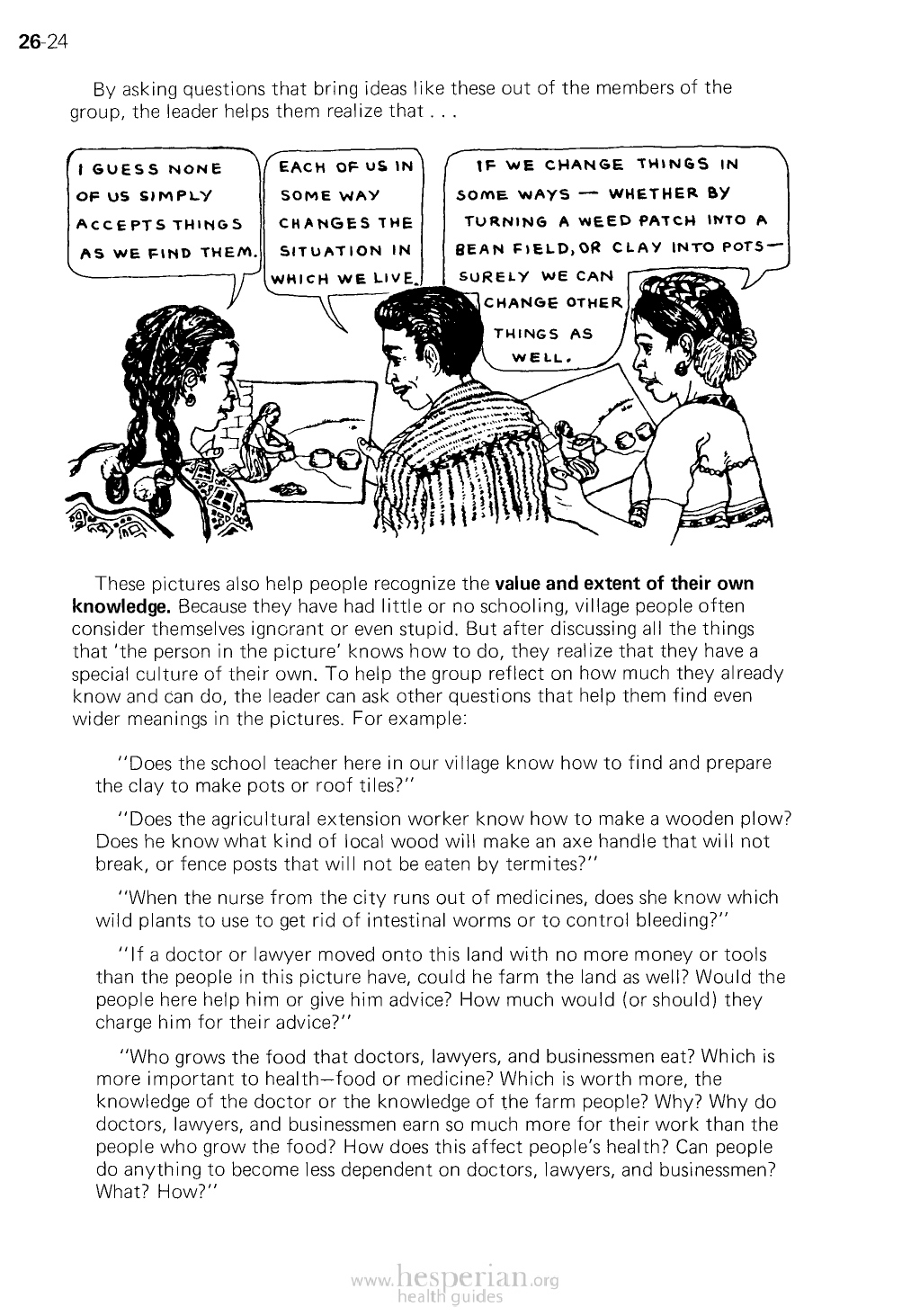
26-24
By asking questions that bring ideas like these out of the members of the group,
the leader helps them realize that. ..
These pictures also help people recognize the value and extent of their own
knowledge. Because they have had little or no schooling, village people often
consider themselves ignorant or even stupid. But after discussing all the things that
‘the person in the picture’ knows how to do, they realize that they have a special
culture of their own. To help the group reflect on how much they already know and
can do, the leader can ask other questions that help them find even wider meanings
in the pictures. For example:
“Does the school teacher here in our village know how to find and prepare the
clay to make pots or roof tiles?”
“Does the agricultural extension worker know how to make a wooden plow?
Does he know what kind of local wood will make an axe handle that will not break,
or fence posts that will not be eaten by termites?”
“When the nurse from the city runs out of medicines, does she know which wild
plants to use to get rid of intestinal worms or to control bleeding?”
“If a doctor or lawyer moved onto this land with no more money or tools than the
people in this picture have, could he farm the land as well? Would the people here
help him or give him advice? How much would (or should) they charge him for their
advice?”
“Who grows the food that doctors, lawyers, and businessmen eat? Which is
more important to health—food or medicine? Which is worth more, the knowledge
of the doctor or the knowledge of the farm people? Why? Why do doctors, lawyers,
and businessmen earn so much more for their work than the people who grow the
food? How does this affect people’s health? Can people do anything to become
less dependent on doctors, lawyers, and businessmen? What? How?”